

“胡昀:远山”
"Hu Yun: Mount Analogue"
2024.03.23 - 08.25
(每周二至周六 Tue - Sun, 10:00 - 18:00)
胡昀
Hu Yun
上海外滩美术馆
Rockbund Art Museum
中国上海市黄浦区虎丘路20号
No.20 Huqiu Rd, Huangpu District, Shanghai, China
路线一:自然历史博物馆
胡昀的创作以研究为基础,着重关注殖民史与近代中国史。他质疑既定的知识体系,例如博物馆的分类和呈现方式以及自然史知识系统的构成,并在艺术实践中凸显这些知识系统的局限。这一线路连接艺术家的早期作品和最新的委约装置。
Route 1: Natural History Museum
Hu Yun’s practice is research-based with a focus on colonial histories and modern Chinese history. He questions established knowledge systems such as how museums classify and present natural history, attempting to reveal the limitations of these systems through his practice.
《神秘花园:里弗斯的雉鸡》,2012—2015,金属书桌、铁丝笼内羽毛、纸上绘画、档案照片、木头和塑料 玩具、木箱、壁纸、彩色有声录像装置,5'36",整体尺寸可变。
The Secret Garden: Reeves’s Pheasant, 2012–2015, iron desk, feather, drawings on paper, archival photos, wood, and plastic toy in iron cage, wooden crate, wallpaper, color video with sound, 5'36", overall dimensions variable.
2010年,胡昀受邀参加伦敦Gasworks驻地,针对英国自然历史博物馆亚洲馆藏进行为期三个月的研究。期间,他对业余自然学家约翰·里弗斯的档案产生兴趣,由此创作装置《神秘花园:里弗斯的雉鸡》(2012–2015)。里弗斯于1812–1831年间旅居中国,发现并命名了一种野鸡。作品《神秘花园》中,点缀着野鸡羽毛图案的墙纸和木箱中播放的晋剧选段都展示了当时的业余博物学家如何塑造了西方对东方的异国幻想,并通过博物馆系统传播。艺术家将档案重新碎片化,邀请观众借助自身的经验重构叙事。
In 2010, Hu Yun was invited by Gasworks to conduct a three-month research about the collections from Asia at the Natural History Museum in London. During the residency, he found the archives of amateur naturalist John Reeves, which eventually led to the installation The Secret Garden: Reeves’s Pheasant (2012-2015). Reeves lived in China from 1812 to 1831, during which he discovered a pheasant and later named it after him. In The Secret Garden, wallpaper adorned with patterns of pheasant feathers and video clips of Jin Opera played in the wooded crate showcase how the amateur naturalist built Western fantasies of the East and spread them through the museum system. The artist re-fragmentizes the archives, inviting viewers to resort to their own experiences to reconstruct the narrative. “Editing” and “re-editing” of archives mark a signature approach of Hu Yun.
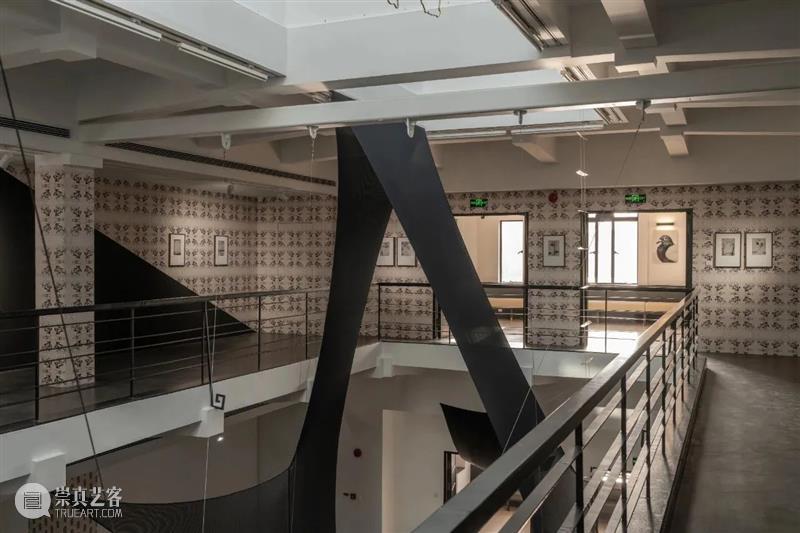
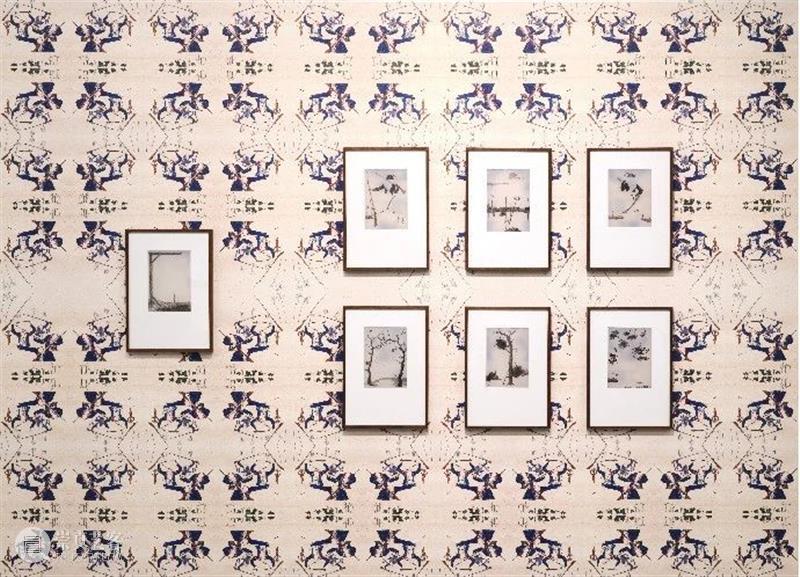
《无题(源自一段历时五年的远征往事)》,2016—2017,描图纸上水墨,7 件,每件 26.5 × 19 cm(画芯),52 × 36 cm(带框), 墙纸,尺寸可变。
Untitled (from the narrative of a five years expedition), 2016-2017, ink on tracing paper, 7 pieces, 26.5 × 19 cm (image), 52 × 36 cm (framed), wallpaper dimensions variable.
《无题(源自一段历时五年的远征往事)》(2016–2017)取材于威廉·布莱克为荷裔英籍士兵、作家约翰·加布里埃尔·斯特德曼的回忆录《一段历时五年的远征往事——镇压苏里南叛乱黑奴记》(1796)所作的插图。在书中,斯特德曼以个人的视角记录了他作为殖民者矛盾的情感。胡昀删除布莱克插图原作中特定的要素,留下大量空白。这种抽象直指分类法和选择性记录背后的暴力。
Untitled (from the narrative of a five years expedition) (2016-2017) is based on a group of illustrations drawn by William Blake for Narrative of a Five Year’s Expedition against the Revolted Negroes of Surinam (1796), a memoir by John Gabriel Stedman, a Dutch-born Scottish soldier and writer. In the book, Stedman wrote down his conflicting emotions as a colonizer from a personal perspective. Taking out certain elements in the original drawings by Blake, Hu Yun intentionally leaves viewers with plenty of blankness. Such abstraction points directly to the violence behind taxonomy and selective recording.

《棕榈 06 (无题)》,2018,描图纸上水墨,110 × 150 × 6.5 cm(带框)
Palm 06 (Untitled), 2018, ink on tracing paper, 110 × 150 × 6.5 cm (framed)

《棕榈14 (雪盲)》, 2023, 纸本水彩,67.5 × 67.5 × 8 cm (带框)
Palm 14 (Snowblind),2023, Watercolour on paper, 67.5 × 67.5 × 8 cm (framed)
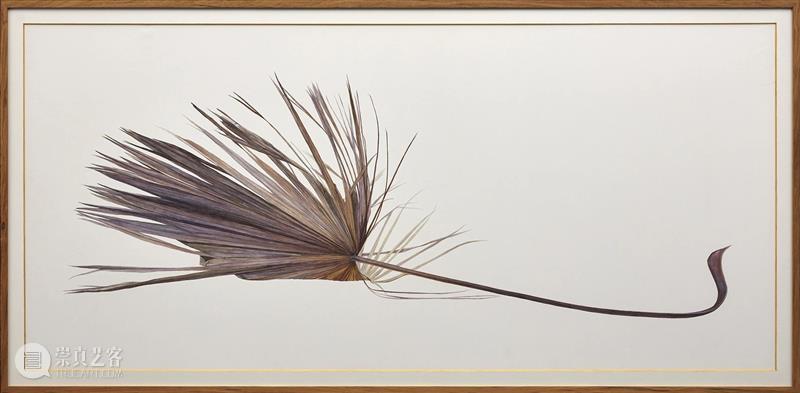
Palm 07 (Self portrait), 2019, Watercolour on paper, 109 × 217 × 5 cm (framed)
在《棕榈》(2018—2023) 绘画系列中,胡昀将棕榈叶作为持续创作的主题。他对棕榈的研究兴趣并非从植物学角度出发,而在于其背后更为错综复杂的殖民语境与历史。作为帝国殖民的战利品,热带植物棕榈频繁地出现在博物馆、黑白照片和书籍插画中,也在全球化背景下被广泛地育种和栽培。系列中的每张绘画都记录了艺术家对不同棕榈叶形态、尺寸和色泽的具体感知。它们所处环境的光线、温度和湿度也影响了艺术家对媒介的选择。
In his painting series Palm (2018–2023), Hu Yun chooses palm leaves as the subject matter. His interest in palm doesn’t derive from botany but the intricate colonial contexts and histories behind it. As a trophy of imperial colonization, palm as a tropical plant is frequently seen in museums, monochrome photos and book illustrations and widely bred and cultivated in the context of globalization. Every painting from this series makes a record of the artist’s intuitive perception of the different shapes, sizes and colors of palm leaves. Moreover, light, temperature and humidity of the environment they are in have also affected the artist’s choice of medium.

《逃生梯》,2024,棕榈叶,棉绳,木板, 约50 x 1500 cm
Escape Ladder,2024, Palm leaf, cotton rope, and wood board, approximately 50 x 1500 cm
棕榈叶也是早期佛教镌刻经文的重要载体,亦称“贝叶”。亚洲文会上海博物院的开馆展就曾展出馆藏的贝叶经文。作品《逃生梯》(2024)中,胡昀模仿贝叶经书的制作工艺,将没有刻字的棕榈叶用细绳两头串起。叶子间的距离被放大,成为一架脆弱的逃生梯。
Palm leaves, also known as “pattra leaves”, played a pivotal role in the engraving of earlier Buddhist sutras. At the inaugural exhibition at Royal Asiatic Society Museum, pattra-leaf scriptures were put on view. In Escape Ladder (2024), Hu Yun strings palm tree leaves (not being engraved) at both ends with a thin rope as an imitation and homage to the production process of pattra-leaf scriptures. As the distance between leaves is widened, a fragile escape ladder takes shape.

《空心人》,2024,弹力纱、超高分子量聚乙烯编织绳,尺寸可变
The Hollow-Men, 2024, elastic mesh, UHMWPE rope, dimensions variable
作品《空心人》(2024)是胡昀为本次展览特别创作的大型空间装置。四个由黑、灰色弹力纱叠套制成的空心结构,顶部张开以树冠的形态穿过楼层。作品根据亚洲文会上海博物院历史平面图中的六个标本展柜的摆放位置和大小重现上世纪30年代的展厅陈列,“树”的存在仿佛木制展柜的幽灵。作为上海最早对外开放的自然博物馆,亚洲文会上海博物院对自然史和人工品做研究、归档和展示工作。这个过程不断被细化,催生了复杂的分类系统。艺术家反思这些系统诞生背后的知识建构通过创作打破认知系统的束缚。历史的展柜化身为黑色的织物,自然生长成为对“知识体系”的诗意抵抗。
The Hollow-Men (2024) is a large site-specific installation made for this exhibition. Four hollow structures formed by the stacking of black and grey elastic meshes open up at the top, protruding in the shape of a tree canopy. Based on the historical floor plan of Royal Asiatic Society Museum which indicated the positions and sizes of six specimen cabinets, the work re-creates the museum's display layout effect back in the 1930s. The presence of the “tree”is reminiscent of the ghost of the wooden vitrines. As the first natural history museum opened to the public in Shanghai, the Royal Asiatic Society Museum was responsible for the research, archiving and display of natural history and artifacts in China. With the constant segmentation of this process, highly complex classification systems emerged. The artist reflects upon such knowledge construction and manages to break barriers of this system by transforming the cabinets into trees that are made of black fabrics as a poetic resistance.

《查无此人》,2024,虫白蜡蜡烛、电铸铜版、傅丹,《2.02.1861》,2009—,裱白蜡木框。整体尺寸可变
No Such Person, 2024, Chinese wax candle, electroformed copper plate, and Danh Vo?, 2.02.1861 (2009-), with Chinese ash wood frame, overall dimensions variable.
《查无此人》(2024)由三件物品组成:一根蜡烛、一块铜板、一封信。放置在五楼天花的蜡烛由白蜡虫分泌的蜡质制成,传教士曾将这种始于宋元时期利用蜡虫产蜡的方式记录下来并传播到西方。蜡烛融化,滴落到铜板上。铜板翻刻了大秦景教流行中国碑碑首拓片。这块出土于陕甘地区的石碑记录了唐代基督教聂斯脱里派——时称“景教”——流传的历史。蜡流经加热的铜板顺势滴落到四楼的越南裔丹麦籍艺术家傅丹的作品《2.02.1861》(2009—)傅丹请他的父亲傅冯抄写法国传教士让·戴法纳·韦纳尔于1861年在越南被斩首前给他自己父亲的最后通信。三个物件将不同时空中的动物、文物、人物交织在一起,打破线性历史的认知逻辑。
No Such Person (2024) consists of three objects: a candle, a copper plate, and a letter. The candle placed on the ceiling of the fifth floor is made of Chinese wax produced by certain scale insects, amethod traceable back to Song and Yuan dynasties, later recorded by missionaries and introduced to the West. The candle melts and drips onto the copper plate, which is engraved with a rubbing from the headstone of the Xi’an Stele. Unearthed from China’s She?n-kan region, the stele documents the history of the Nestoriansect of Christianity, also known as the “Church of the East”, in China during the Tang Dynasty. Flowing through the heated copper plate, wax drips further down to an artwork on the fourth floor: 2.02.1861 (2009-), by Danish-Vietnamese artist Danh Vo?. Vo? asked his father Phu?ng Vo? to transcribe the last communication from the French Catholic Saint The?ophane Ve?nard to his own father before being decapitated in 1861 in Vietnam. The three objects interweave together animals, cultural relics, and people from different time and space, breaking the cognitive logic of linear history.
相关阅读
FOR MORE READINGS
关于艺术家
ABOUT THE ARTIST

胡昀,1986 年出生于上海,2008年毕业于中国美术学院。现生活工作于上海和贝尔格莱德。
胡昀的作品包括绘画、水彩、行为、录像和装置。通过调动来自不同人和历史的经验,胡昀将各种以往生产过的材料重新纳入自己的日常工作中,因此,无法孤立地去看待他的每一件作品,每一个项目都享有共同的话题,都是有所预设、彼此关联的。
胡昀参加了第十届亚太当代艺术三年展(2021),第六届新加坡双年展(2019),第十一届光州双年展(2016),第四届广州三年展(2012)以及第七届深圳雕塑双年展(2012);他的作品也曾在广州美术学院大学城美术馆,昊美术馆,上海当代艺术博物馆,巴黎蓬皮杜艺术中心,广东时代美术馆及余德耀美术馆等机构展出。他的个展包括“微缩景观”,新加坡国立大学博物馆,新加坡,2019;“我们从未离开过”,西安OCAT,西安,中国,2017;“叙事病”,AIKE,上海,中国,2016;“轻拿轻放”,AIKE,上海,中国,2013;“我们的祖先”,歌德开放空间,上海,中国,2012;“自然的图像”,英国自然历史博物馆,伦敦,英国,2010。
Born in 1986 in Shanghai. He graduated from China Academy of Art in 2008 and currently lives and works in Shanghai and Belgrade.
Hu Yun’s works range from graphite and watercolors to performance, video, and installation. Interested in how an individual positions him or herself within the course of history, he constructs the links that probe the inseparable coexistence of past and present, individual and public. He is adept at mobilizing various personal and historical experiences, incorporating previously produced materials into his artworks; as a consequence, it is impossible to consider any of Hu’s works in isolation since they all share a common theme, an element of foreshadowing, and they are all conceptually interconnected.
Hu Yun has participated in the 6th Singapore Biennale (2019), the 11th Gwangju Biennale (2016), the 4th Guangzhou Triennial (2012) and the 7th Shenzhen Sculpture Biennale (2012). His works have also been exhibited at Art Museum of Guangzhou Academy of Fine Arts; How Art Museum; Power Station of Art, Shanghai; Centre Pompidou, Paris; Times Museum, Guangdong and Yuz Museum, Shanghai. His selected solo exhibitions include “Another Diorama”, NUS Museum, Singapore, 2019; “We’ve been here before”, OCAT, Xi’an, China, 2017; “Narration sickness”, AIKE, Shanghai, China, 2016; “Lift with Care”, AIKE, Shanghai, China, 2013; “Our Ancestors”, Goethe Institut, Shanghai, China, 2012; “Image of Nature”, Natural History Museum, London, UK, 2010.
正在展出
CURRENT EXHIBITION

“惜别的海岸”
"The Departing Shore"
2024.03.09 - 04.27
每周二至周六 Tue - Sat, 10:00 - 18:00
AIKE,上海市徐汇区龙腾大道2555号6号楼
Bldg 6, 2555 Longteng Avenue, Shanghai, China




已展示全部
更多功能等你开启...




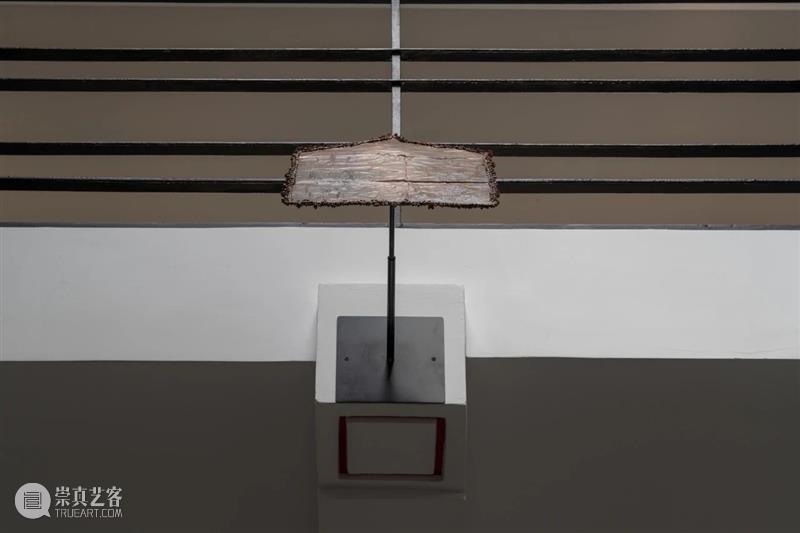




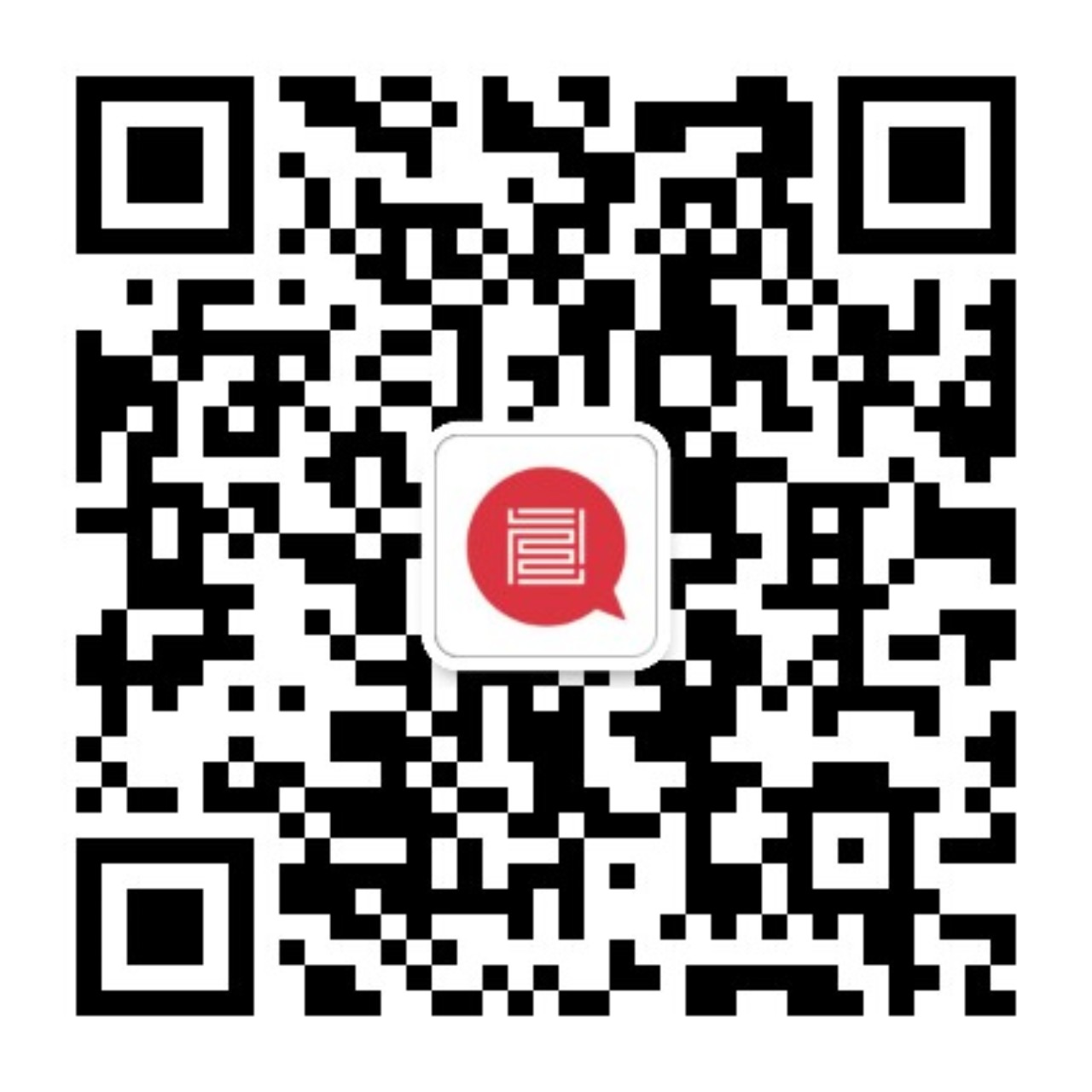

 分享
分享